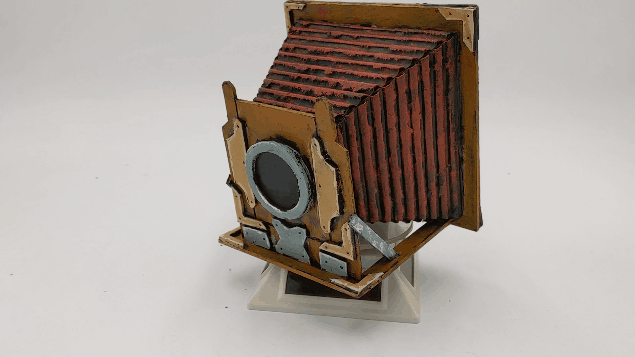Fire Underground
Software Animation,
2018-2020Overview Video + Screenshots Research Preproduction Demos + Artifacts
Preproduction
My goal was to be playful with realtime 3D graphics as a material, and
not to imitate film, stop-frame animation, and other media. I was also interested in how the visual language of games could be used in cinema, and how I could use it to explore the themes of mythmaking, entrapment, enclosure, and objectification that I was interested in. I was looking at things like:Taxidermy dioramas and other exhibits at the Carnegie Museum of Natural History in Pittsburgh Pennsylvania.
The idea of using the skin and bones of the dead to tell a story about natural history, but also about the prestige and goodness of an american industrialist, was a key inspiration for the piece.
Carnegie collected fossils, minerals, and more, for the people of Pittsburgh, but also to enhance his own prestige. Casts of fossils like Diplodocus Carnegii were given as gifts to various heads of state. Now, a dinosaur named for Andrew Carnegie is one of the most famous and widely exhibited dinosaur skeletons in the world.
The idea of using the skin and bones of the dead to tell a story about natural history, but also about the prestige and goodness of an american industrialist, was a key inspiration for the piece.
Carnegie collected fossils, minerals, and more, for the people of Pittsburgh, but also to enhance his own prestige. Casts of fossils like Diplodocus Carnegii were given as gifts to various heads of state. Now, a dinosaur named for Andrew Carnegie is one of the most famous and widely exhibited dinosaur skeletons in the world.


Traditional stop-frame animation like The Pied Piper of Hamelin by Jiri Barta:
- A 'clockwork town' where the humans are basically automatons motivated and transformed by a brutal social system
- Very interested in the “game-like” visual devices the film uses to communicate narrative, like in one scene where villagers haggle over a chicken by spitting coins at eachother.

Contemporary artists and animators working in experimental software animation like Peter Burr and Nikita Diakur:
- ragdoll puppeteering for uncanny and lively effect.
- use of game-like levels (dungeons, labyrinths, etc) and automatons.
3D game aesthetics from older generations, especially Playstation 1 and Nintendo 64
- No serious pretense of 'realism', or even of the mimesis of other media forms, unlike more contemporary games.
- Seams are visible but evocative - playful use of visual tricks like billboarding sprites and flat planes with transparency.
Nature documentaries about natural history and speculative biology were also an important reference.
Asset Production Process
For this project I wanted to develop processes for making expressive graphics quickly and cheaply. I was excited about photogrammetry, and wanted to treat it not only as a way to index real-world objects in a game engine, but as a creative tool with it's own affordances and limitations that I could lean into or resist to create a unique visual style.A lot of the most compelling visuals came from very simple tricks. This short clip shows a character in the middle of transforming into a glowing multilimbed creature. To show his transformation, I deleted patches of polygons from his outer ‘skin’ at random, and added a dim blue glow to the vertices and edges to highlight the effect.

Iteration on capture technique:
- Originally I planned on combining sites in real-life coal country with fantastical / handmade things. I did a little of this but large scale capture was prohibitively difficult without more budget for things like cranes or drones.
- For small objects, I began by simply taking photos of objects on a table in my studio.
- I purchased a light booth for product photography (~$100) to get more even lighting.
- A small, solar powered rotating display stand (~$8) improved consistency between photos. My friend Shohei Katayama leant me a leftover from one his sculpture “Proximity” to try. The LEDS in the light booth were able to power the rotating platter. Later I bought a battery powered stand to move heavier objects.
- Eventually I started recording video and used premiere to extract stills.

Modifying with the physical objects to improve capture:
- At I first sculpted complete, very complex figures and painted in muted colors
- To facilitate better captures, I broke down some figures into pieces and captured them separately.
- Figures made of tin foil and wire could easily be posed into a T-pose or A-pose. I found the A pose was better for getting more even lighting on the arms and preventing holes on their undersides.
- I started to paint with more garish and contrasting colors, to make processing photogrammetry easier, and corrected colors later in photoshop.
- at first I made many props very small, but this made it harder to sculpt and capture small details, shifted to making larger props, including a 1-foot diameter scrip coin.
Processing photogrammetry captures:
- Characters were intentionally designed be very "crunchy", which:
- is an easy way to achieve a richly detailed texture
- is more forgiving in terms of topology and weight painting
- I would sometimes retopologize props, especially if a scene required many instances of the prop, but most often a decimate modifier was enough for my purposes.
- For rigging and weight painting, blender's automatic weight painting with a few minor adjustments worked well in most cases.
- Because models are so chunky and grungy, holes and other errors in textures that come from a bad 3D capture could usually be fixed with the clone stamp tool in blender's texture painting modes